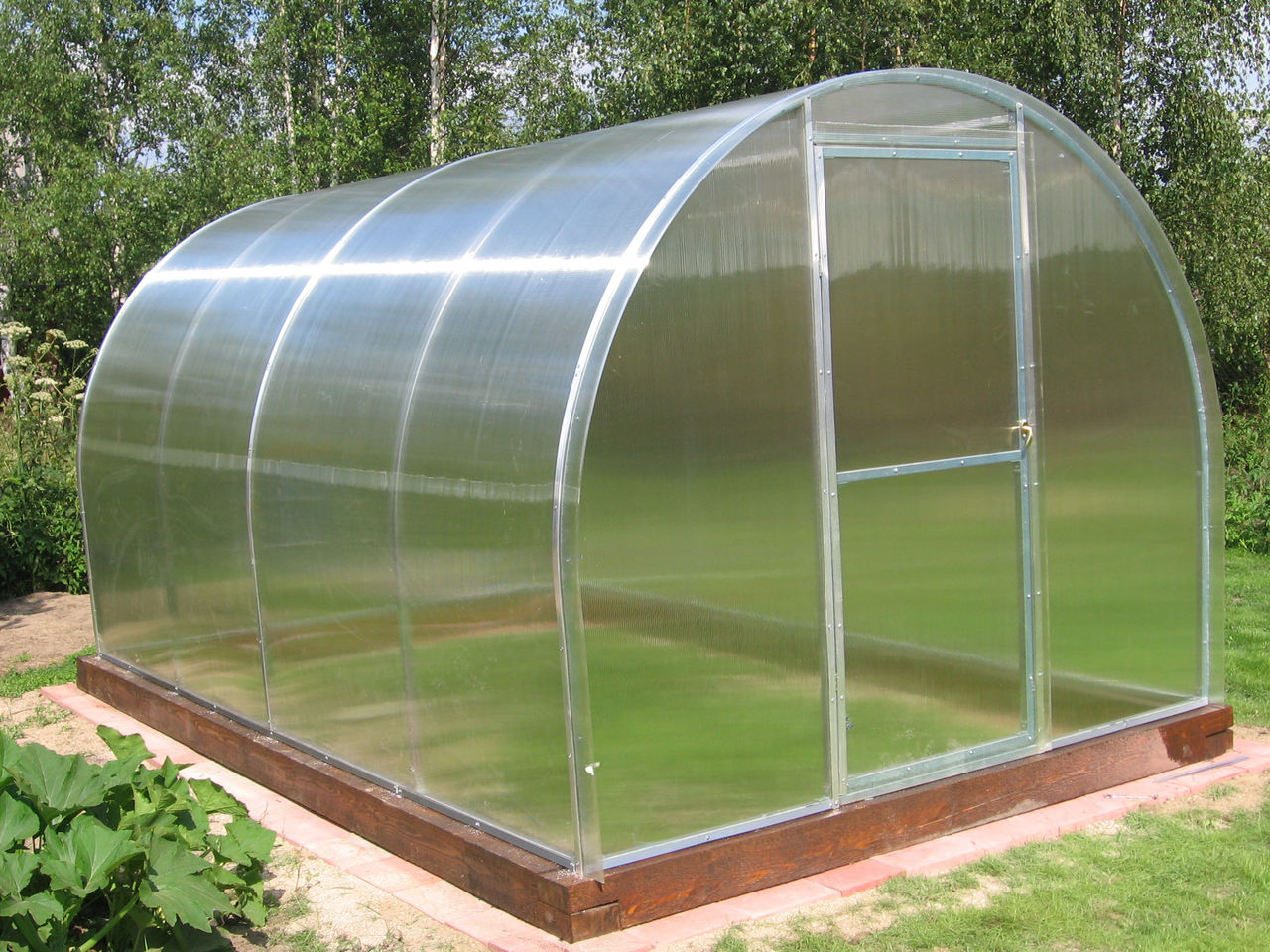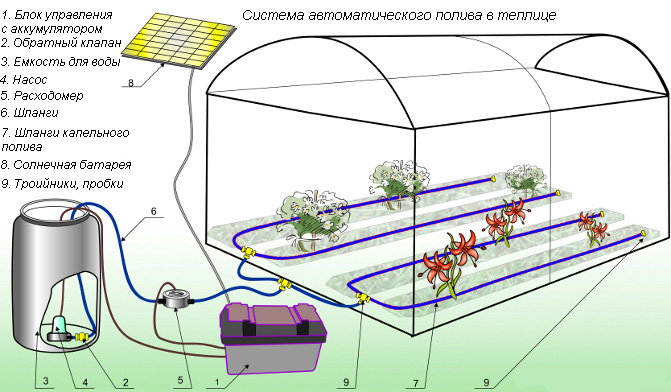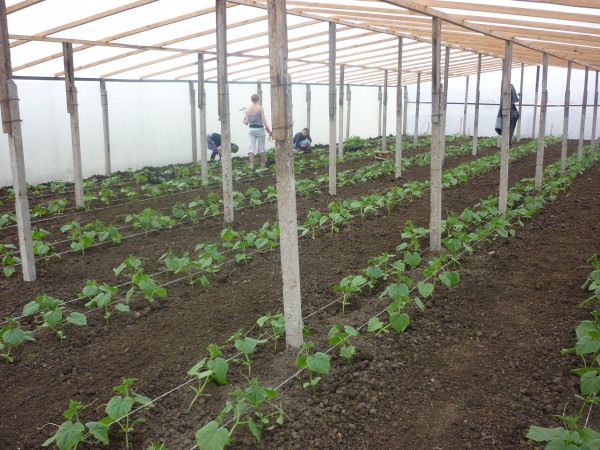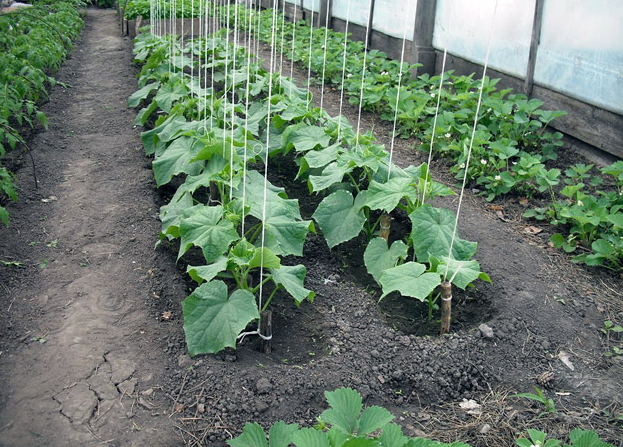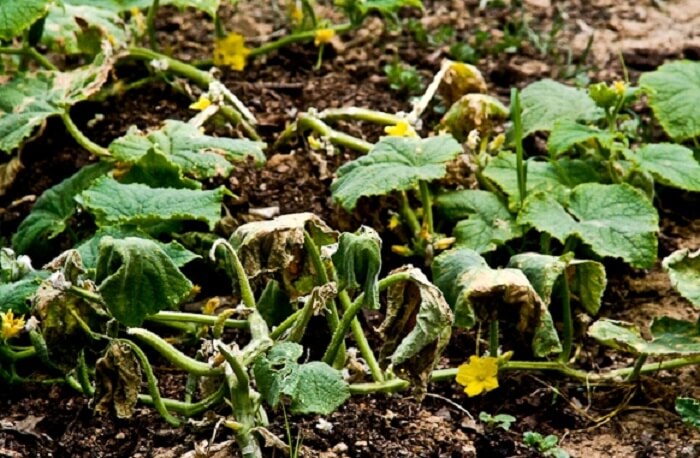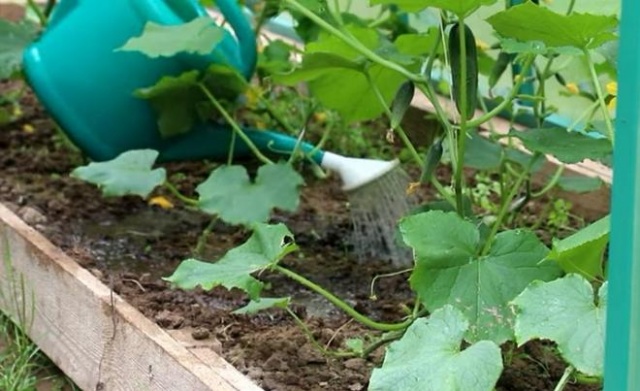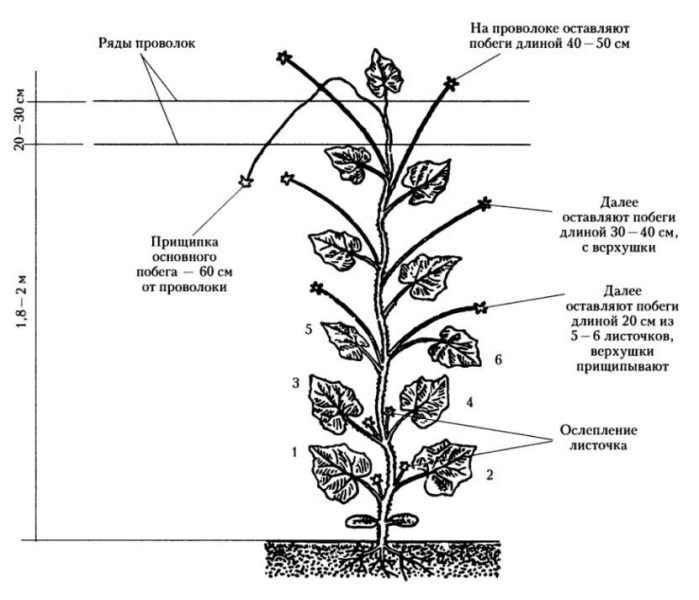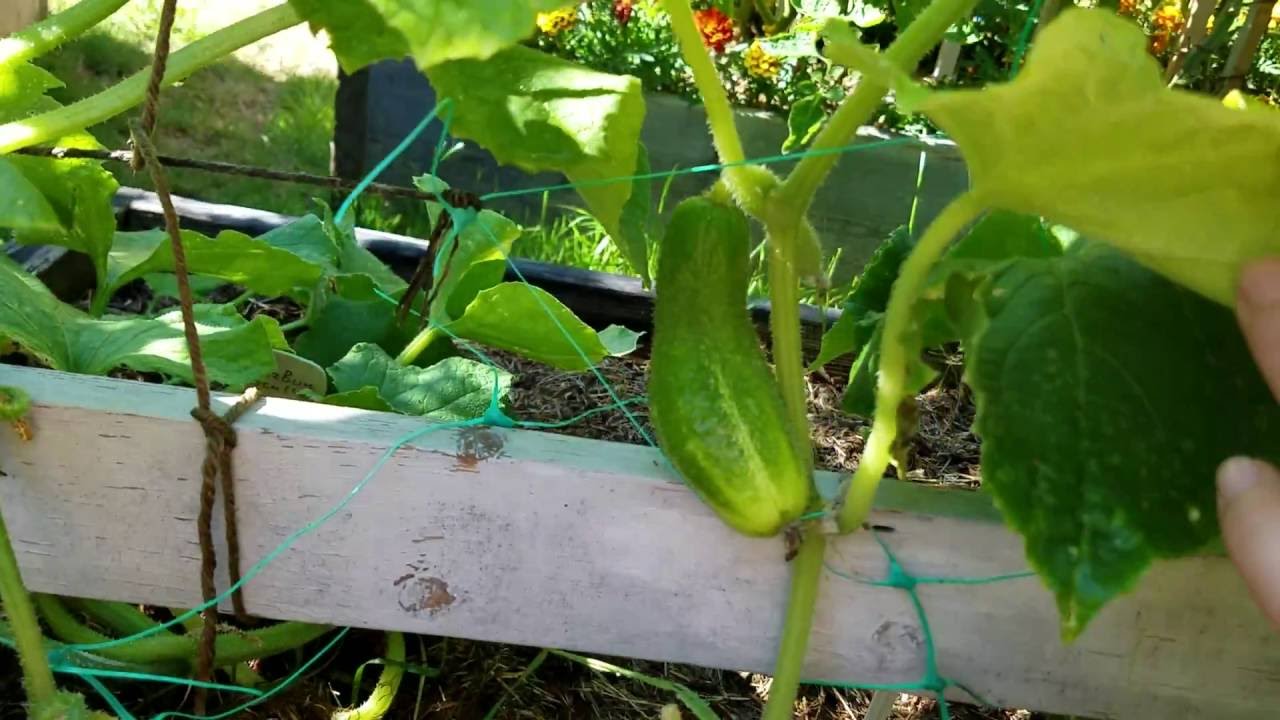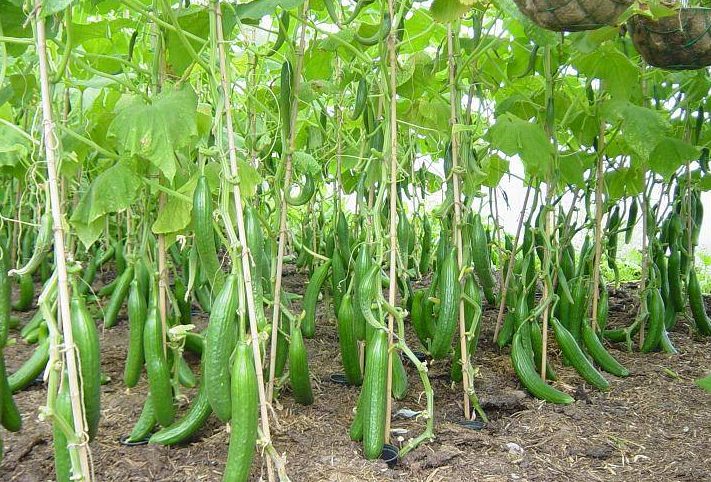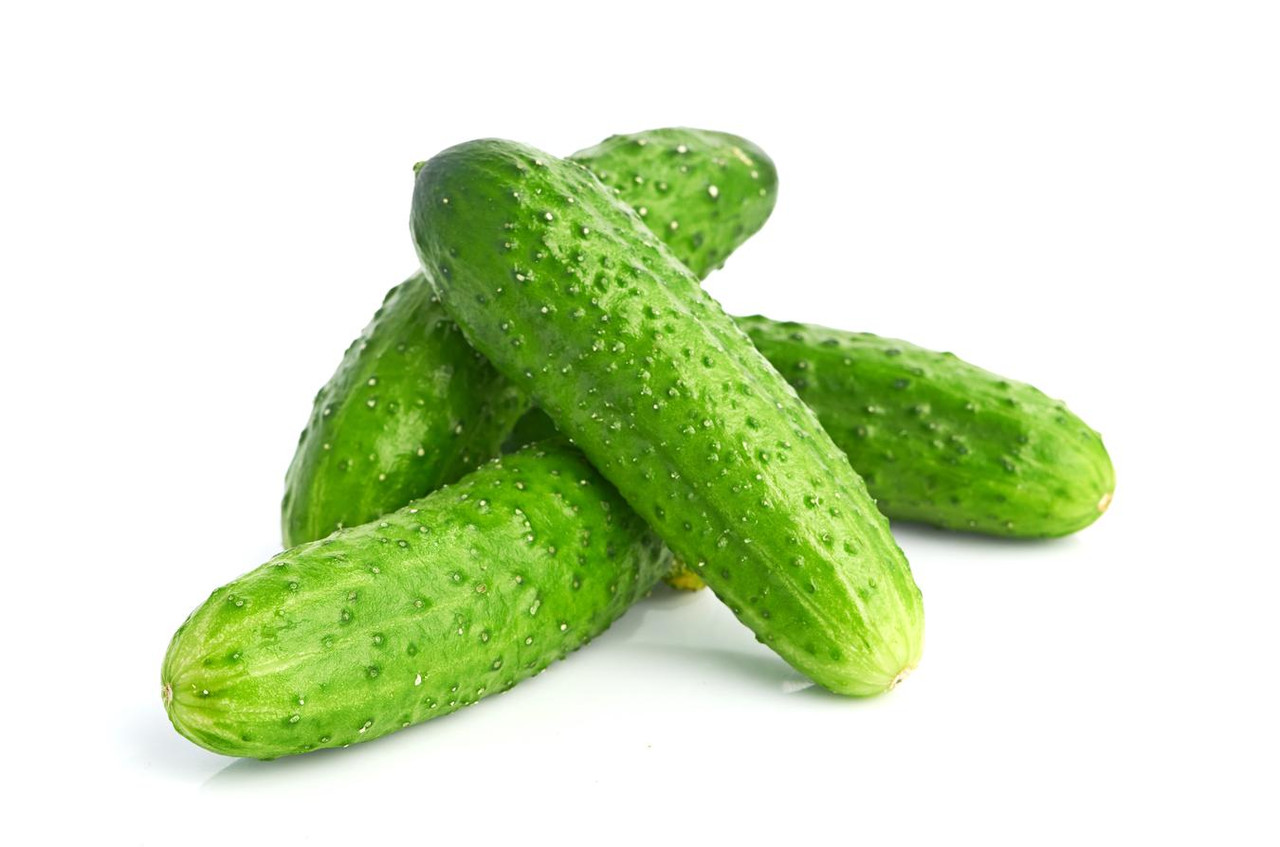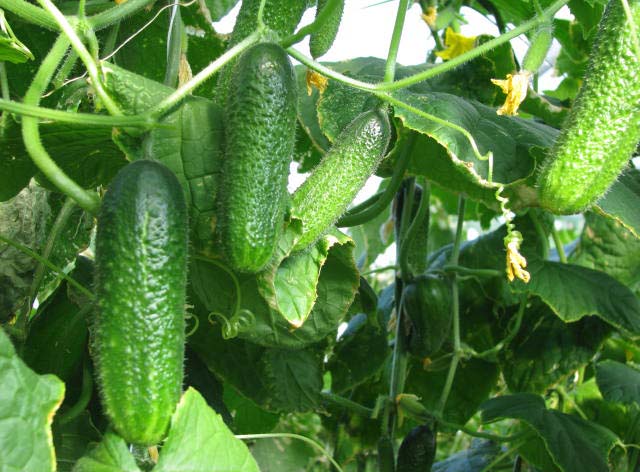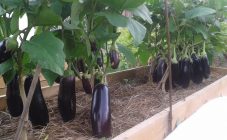Content:
There are regions where it is difficult to grow cucumbers outdoors. In addition, greenhouse conditions have a number of advantages over open soil - light transmission, protection from rain and wind, greenhouse effect, early planting, temperature regulation.
It seems that everything was done correctly: they built a greenhouse, raised seedlings, transplanted it into a greenhouse, fed it, watered it, but the ovaries have fallen off or not the female flowers. So why don't cucumbers grow in the greenhouse, form ovaries and bear fruit?
Polycarbonate greenhouse
Polycarbonate sheets are composed of many vacuum cells (mini chambers) that provide thermal insulation in the greenhouse. The material transmits light well, while retaining ultraviolet rays and protecting plants from bright light. Polycarbonate is now popular, it is replacing glass and film.
Benefits:
- thermal insulation;
- light transmission;
- flexibility;
- ease;
- strength;
- durability;
- withstands snow, wind, temperature changes.
In such a greenhouse, ideal conditions are created for the growth, development and fruiting of cucumbers. To place it, they choose a flat place in the summer cottage, it is possible with a slight slope to the south side.
For cucumbers, fertile soil is needed; it is advisable to prepare it in a greenhouse in the fall.
It is necessary to provide for an irrigation scheme for cucumbers, the groundwater in the selected area must lie at a depth of at least 2 meters.
For zelents, the ratio of the volume of the greenhouse to its area is 2: 1; with such a construction, the temperature inside the structure will be stable and even capricious plants will not lose their ovaries.
In polycarbonate buildings, cucumber seeds are sown directly into the soil. Not all seeds of zelents are suitable for indoor use. For the greenhouse, choose hybrid self-pollinating types of vegetables of the first reproduction marked F1.
Arrangement of beds in the greenhouse
Cucumber loves warmth, they create warm beds for it, add mullein or compost to the soil. A meter-long trench is prepared, manure is poured, covered with soil 30 cm. The plot is watered, seeds are sown - per 1 sq. meter 4-5 seeds in holes to a depth of 3-4 cm.
As a result of the decomposition of manure, heat is released, which will warm the earth. Cucumber seedlings are planted in early April if the greenhouse is heated. If heating is not provided in the facility, the seedlings are planted in May. The seedlings are carefully placed to a depth of 10 cm so as not to damage the rhizome. The distance between the seedlings is 35 cm.
After planting, the seedlings need to be watered with warm rainwater. Long ropes are tied from the soil surface to the roof of the building, along which cucumber whips will twist.
To avoid damage to the root system, seedlings are planted with a lump of earth or in peat cups.
Care
Greenhouse seedlings care measures:
- The future harvest depends on the garter of the bushes, it must be done.
- Cucumber is a moisture-loving plant, watering should be regular, the drip method is best. Cold water slows down the growth of bushes, so they are watered with a liquid with a temperature of at least 24-28 degrees.Water should not get on the leaves, it provokes fungal diseases.
- The soil must be loosened regularly to ensure aeration. This must be done carefully so as not to damage the fragile roots and lashes.
- In hot weather, you need to open the vents, air circulation will save the plants from heat and diseases.
- During the season, cucumbers are fed 3-4 times with mineral complex fertilizers, diluted manure. To prevent the foliage from turning yellow, saltpeter is added. At the beginning of the growing season after planting seedlings, nitrogen fertilizers are applied after 2-3 weeks. During flowering, the soil is enriched with phosphorus and potassium, trace elements.
- Bushes grow intensively, the lashes need to be formed every 7 days. Many hybrid species recommend single stem cultivation. If the stem is not one, then the main lash is suspended vertically, the side ones - at an angle of 50-60 degrees. Grasshopping increases the number of fruits.
- It is recommended to mulch the soil with hay, sawdust.
Why do cucumbers grow and bear fruit poorly in a greenhouse
The reasons why cucumbers stop growing, do not form fruits in greenhouse conditions:
- fungal diseases;
- insect attacks;
- a large amount of nitrogen fertilizers activates the growth of foliage, the plant does not have enough strength for fruits;
- poor quality seed material;
- sowing violations;
- cold air, drafts;
- temperature drops;
- lack of moisture, improper moisture;
- when transplanting seedlings, the roots were damaged;
- planting density, plants are crowded;
- lack of pollination;
- insufficient nutrients, poor soil composition.
Why cucumbers are not poured
Young animals react painfully to temperature changes, this is noticeable during the period of fruit growth. For good ripening and pouring vegetables, you need to observe the temperature regime. The optimal values are 22-24 degrees, at night - 15-18 degrees.
If the temperature is kept below 7 degrees for more than three days, all the processes of development of vegetables slow down, the plants may die.
What to do to make cucumbers grow and bear fruit
You can not plant greens on the same site for several years in a row or where their relatives grew. For the prevention of diseases and nutrient enrichment, greenhouse soil is prepared in the fall:
- soil treatment with bleach (0.5 kg per 10 l), fungicides: Fitosporin, Phytocide;
- add organic matter for digging: mullein (per 1 sq. m. 6 kg), compost, humus, peat;
- spill the dug-up beds with hot water. You can add a little manganese.
After planting, it is worth providing the seedlings with proper conditions.
Fertilizer
Improper fertilization leads to loss of ovaries, yellow leaves, excessive formation of male flowers. A common problem is an oversupply of nitrogen supplements, a deficiency of potassium and phosphorus.
To replenish minerals, add superphosphate (for 9 liters of water 2 tablespoons), ash (1 spoon for a bucket of water), it is insisted for 3 days, watering at the root. Apply a solution of nitroammofoska - for 9 liters of liquid 1 spoon of the product. Nettle tincture can be added.
Top dressing should be done at the root in the warm season. Spray the foliage with fertilizer in cool weather.
Fertilize 4 times per season: when foliage appears, 3 weeks after the first feeding, before flowering, two weeks before the formation of cucumbers.
Watering
Excess or lack of moisture also leads to the appearance of barren flowers, ovary falling off, crooked fruits. The optimal watering regime is every 3 days, in the heat 4 times every 7 days. Lack of water leads to a slowdown in the growth of vegetables, the foliage begins to turn yellow.
Formation of bushes
Removal of lateral shoots, leaves, antennae. The formation technology depends on the variety: branched type or with limited branching. There are hybrids that form only one stem. Basically, gardeners cut off the main lash up to 1 meter, leave side shoots up to 45 cm long.
If the planting is too dense, it will lead to a lack of light, poor ventilation, lack of nutrients, while the ovaries are not formed. After the sprouts appear, the thickets must be thinned out, leaving strong and healthy specimens at a distance of 30 cm.
Pollinating insects
If bee-pollinated plants are planted, it is necessary to attract bees to the greenhouse. Plant honey plants next to cucumbers or spray the bushes with a sweet solution with lemon balm twice a week. If there are not enough insects, you will have to pollinate the flowers yourself, touching the female inflorescence with the male flower. Manipulation is best done in the morning when it is not very hot.
Optimal microclimate
If the temperature in the greenhouse is higher than 32 degrees, the vegetable crop stops bearing fruit and may die. Air humidity above 80% is fatal for young animals.
Do cucumbers like a draft in the greenhouse? Drafts are harmful to plants, especially during flowering and fruit formation.
Diseases
Powdery mildew is fought with an iodine solution. To get rid of fungi, the soil is watered with a manganese solution, the bushes are treated with tincture of onion peel and garlic arrows.
Greenhouse maintenance recommendations
The greenhouse is prepared in the fall, after harvesting:
- wash the metal frame, clean it from rust, paint it with paint;
- treat a wooden building with copper sulfate;
- remove the removed soil outside the greenhouse;
- dig up the ground thoroughly;
- fumigation - set fire to lump sulfur with kerosene, close the door, vents in the building. You can air it after 5 days.
In order for the ovaries to form and not fall off, the greenhouse must be warmed up with the help of barrels, buckets, bottles of hot water. They are placed inside the entire area of the building, then the plants will not freeze at night.
If you follow all the recommendations for growing, the harvest will not keep you waiting.
